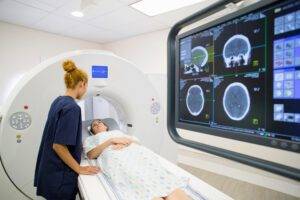Patient-centered care is a holistic approach to healthcare that focuses on patients’ individual needs and preferences.
Anthony Misitano of PAM health says in acute care facilities, this philosophy has gained significant traction as healthcare providers recognize the importance of tailoring treatments to meet each patient’s unique wellness needs. By prioritizing individual wellness needs, acute care facilities can improve patient outcomes, enhance patient satisfaction, and deliver more effective and personalized care.
The Importance of Individual Wellness Needs in Acute Care Facilities
In traditional healthcare settings, patients often feel like spectators in their care, with decisions made without their active involvement. However, PAM Health, a leading provider of patient-centered care solutions, is revolutionizing the healthcare industry by placing patients at the center of their care journey. Recognizing that every patient is unique, PAM Health emphasizes the importance of individual wellness needs in acute care facilities.
Acute care facilities can better address the diverse range of factors that contribute to a patient’s overall well-being by considering individual wellness needs. This includes not only physical health but also mental, emotional, and social aspects. By taking a comprehensive approach to patient care, acute care facilities can ensure patients receive the personalized attention they need to achieve optimal wellness.
Benefits of Prioritizing Individual Wellness Needs in Acute Care Facilities
The benefits of prioritizing individual wellness needs in acute care facilities are far-reaching. Firstly, patients experience improved outcomes when their care is tailored to their needs. By considering the individual’s unique circumstances, healthcare providers can develop personalized treatment plans more likely to result in successful outcomes.
Secondly, patient satisfaction increases when individuals feel their needs are being heard and addressed. In a patient-centered care environment, patients have an active role in decision-making, fostering a sense of empowerment and control over their health. This leads to higher levels of patient engagement and compliance with treatment plans.
Moreover, prioritizing individual wellness needs also has financial benefits. Patient-centered care reduces healthcare costs in the long run by preventing avoidable complications and readmissions. Additionally, it enhances the reputation of acute care facilities, attracting more patients and establishing them as leaders in providing quality care.
Strategies for Implementing Patient-Centered Care in Acute Care Facilities
Implementing patient-centered care in acute care facilities requires a multifaceted approach. First, it is essential to create a culture that prioritizes patient well-being. This involves training healthcare professionals to actively listen to patients, respect their preferences, and engage them in shared decision-making. Additionally, incorporating patient feedback through surveys and focus groups allows for continuous improvement in care delivery.
Furthermore, the use of technology can greatly enhance patient-centered care. Electronic health records facilitate information sharing across healthcare providers, ensuring patients’ needs are met seamlessly. Telemedicine and remote monitoring enable patients to receive care in the comfort of their homes while still maintaining regular communication with healthcare professionals.
Collaboration among healthcare providers is another key strategy for implementing patient-centered care. Different specialists can pool their expertise and provide comprehensive care solutions that address a patient’s wellness needs by working together. This interdisciplinary approach ensures that patients receive the best care tailored to their circumstances.
Challenges and Considerations in Implementing Patient-Centered Care
While patient-centered care is a desirable goal, its implementation is challenging. One of the main hurdles is resistance to change within the healthcare system. Shifting from a provider-centered approach to one that puts patients at the center requires a cultural shift and may encounter resistance from healthcare professionals accustomed to traditional care models.
Another challenge lies in integrating patient-centered care into existing workflows and systems. Acute care facilities must invest in technology and infrastructure that supports the delivery of personalized care. This may involve significant financial investments and staff training to utilize these resources effectively.
Ethical considerations also apply when implementing patient-centered care. Balancing individual wellness needs with limited resources and ensuring equitable access to care for all patients can be complex. Acute care facilities must navigate these ethical dilemmas while maintaining a patient-centered approach.
Future Trends and Advancements in Patient-Centered Care
The future of patient-centered care holds exciting possibilities. Advancements in technology, such as artificial intelligence and machine learning, have the potential to revolutionize personalized care delivery. These technologies can analyze vast data to identify patterns and provide tailored treatment recommendations.
Furthermore, integrating genomics and precision medicine into patient-centered care will enable healthcare providers to understand a patient’s genetic makeup and develop targeted therapies. This personalized approach has the potential to improve treatment outcomes and reduce adverse reactions to medications greatly.
Additionally, patient-centered care is becoming increasingly integrated with community-based care. By engaging patients in their local communities and addressing social determinants of health, acute care facilities can create a more comprehensive approach to wellness. This involves collaborating with community organizations, social workers, and public health agencies to address the underlying factors contributing to an individual’s health.
Conclusion
Patient-centered care is transforming the healthcare landscape, particularly in acute care facilities. Healthcare providers can deliver more effective, personalized, and holistic care by prioritizing individual wellness needs. The vast benefits include improved patient outcomes, increased satisfaction, and reduced healthcare costs. While challenges exist in implementing patient-centered care, technological advancements and evolving healthcare trends offer promising solutions. By embracing patient-centered care, acute care facilities can put patients at the center of their healthcare journey, leading to improved wellness and a better quality of life.






















